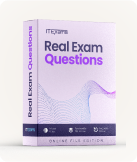APICS CPIM - Certified in Planning and Inventory Management Exam
Page: 1 / 56
Total 276 questions
Question #1 (Topic: Exam A)
How would a master production schedule (MPS) be used in an assemble-to-order (ATO) manufacturing environment?
A. The MPS is used to plan subassemblies and components; end items are only scheduled when a customer order is received.
B. Subassemblies are scheduled in the MPS when the customer order is received, and production can start.
C. Typically, the MPS is not used in companies using an ATO manufacturing strategy.
D. Often in an ATO environment, the MPS is created once a year and only revised if a product is discontinued.
Answer: A
Question #2 (Topic: Exam A)
Price negotiation is most appropriate when purchasing which of the following product categories?
A. Commodities
B. Standard products
C. Items of small value
D. Made-to-order (MTO) items
Answer: D
Question #3 (Topic: Exam A)
A part is sold as a service part, and it is also used as a component in another part. Which of the following statements about the planning for this part is true?
A. Its low-level code is zero.
B. The material requirements for the part will be understated.
C. The service part demand can be included in the gross requirements.
D. It shouldn’t have any safety stock.
Answer: C
Question #4 (Topic: Exam A)
For a company that uses first in, first out (FIFO) inventory accounting, the actual use in production of a recently arrived shipment of more expensive components rather than lower-cost components previously received will have which of the following results?
A. Higher cost of goods sold (COGS)
B. Lower COGS
C. No change to COGS
D. A violation of FIFO rules
Answer: D
Question #5 (Topic: Exam A)
What is the main negative effect of changing the due dates of open orders?
A. The schedule information becomes inaccurate.
B. The customer service level decreases.
C. It leads to “nervousness” in the schedule.
D. The schedule does not support demand.
Answer: C
